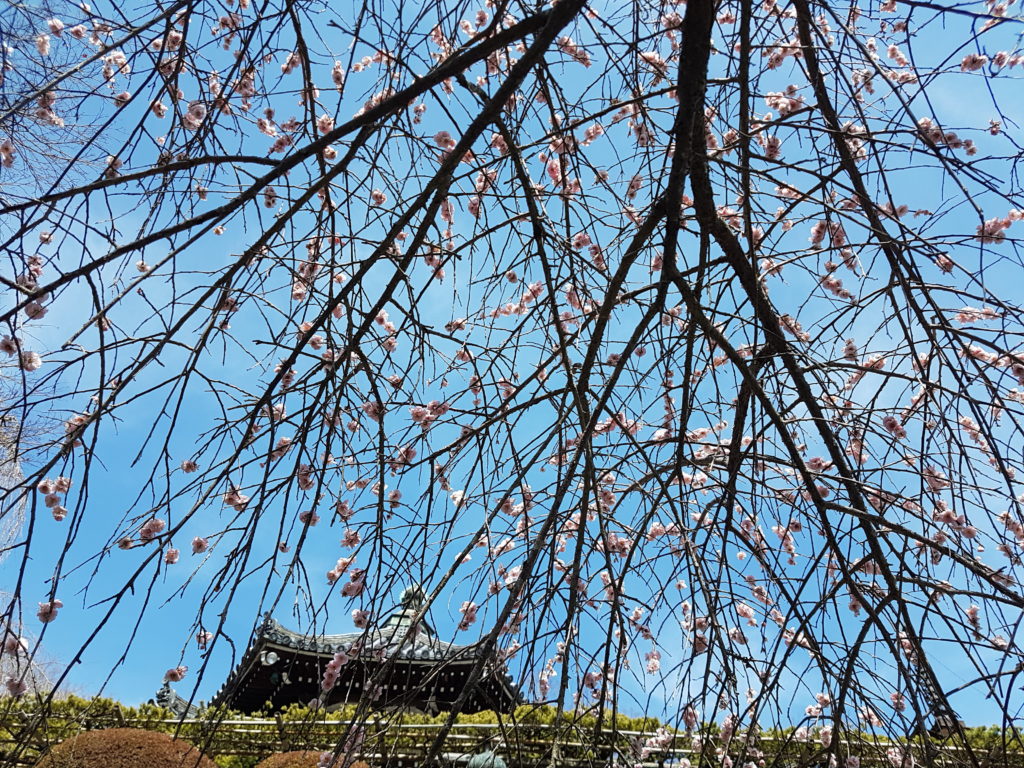Yoshiminedera
[Day 6 of our Spring 2019 journey in Japan]
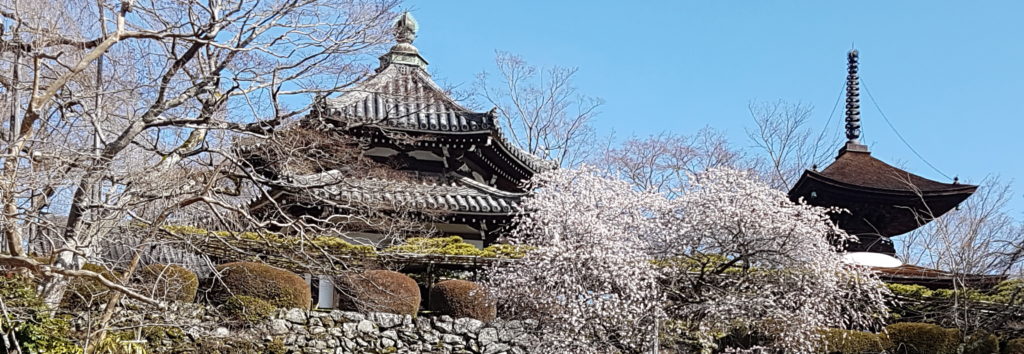
“It is quite far away. Why do you want to go there?”, asked the officer at the Kyoto Station Tourist Information Centre. I was slightly taken aback by the implied discouragement. I thought I was doing Kyoto a favour to decongest the city by two persons tomorrow. “Not many people go to Yoshiminedera, mostly old people”, she added. That further deflated my enthusiasm for the planned trip quite a bit. After all, who knows Yoshiminedera more than a tourist guide in Kyoto.
(By the way, dera means temple. Therefore Yoshiminedera Temple would be a bit redundant, so I will stick to Yoshiminedera)
She took some time to check her computer, scrutinising the screen with lines of doubts written on her face. Surely it is not such an obscure location to visit according to my earlier search on the Internet. I found out online that there was only one bus going to Yoshiminedera and I wanted to confirm the timetable before making the trip.
She came back eventually and flattened a huge folding map to mark the location of the bus stop and route to Yoshiminedera with a red pen. She was quite friendly, but the brief consultation and red ink scribblings at the outer corner of the large map seemed to suggest that it is not worthwhile to make a journey there.
Looking at the photograph we took at Yoshiminedera a day later, one wonders why this is not a popular destination. It turned out to be one of the most scenic and serene places we visited on our trip.
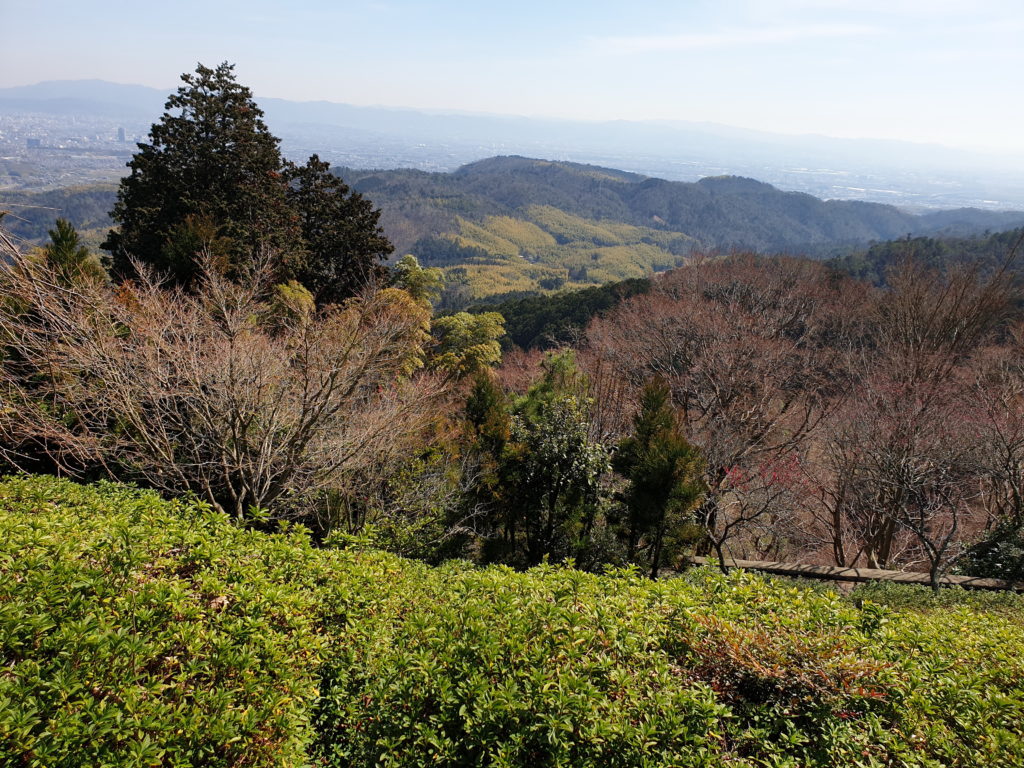
The next morning, we set off for Mukomachi Station early and looked for the Hanyku bus 66 bus stop. The location of the bus stop did not match the information given by the tourist guide, and we wondered for a while whether we would make it for Yoshiminedera that day. The bus came eventually, but not according to the bus timetable given which ran counter to the famed reputation of the Japanese for punctuality. Later we realised that we might have misheard the name of the station provided by the tourist information centre. Confidence restored!
The journey to Yoshiminedera took about 30 minutes, passed through mostly residential areas, offering a glimpse of ordinary local life. The streets and surroundings seemed devoid of tourists, which lent an air of authenticity to the place. It is more satisfying to be among locals than jostling with fellow tourists in must-see attractions. As the bus weaved through moderate crowds of residents going about their daily lives, the driver picked up and unloaded passengers with patience and cheerfulness before heading up the hill to the last stop just opposite the path up to the temple.
It looked like not many people have trodden here lately as the steep slope up the entrance was covered in bright green moss.
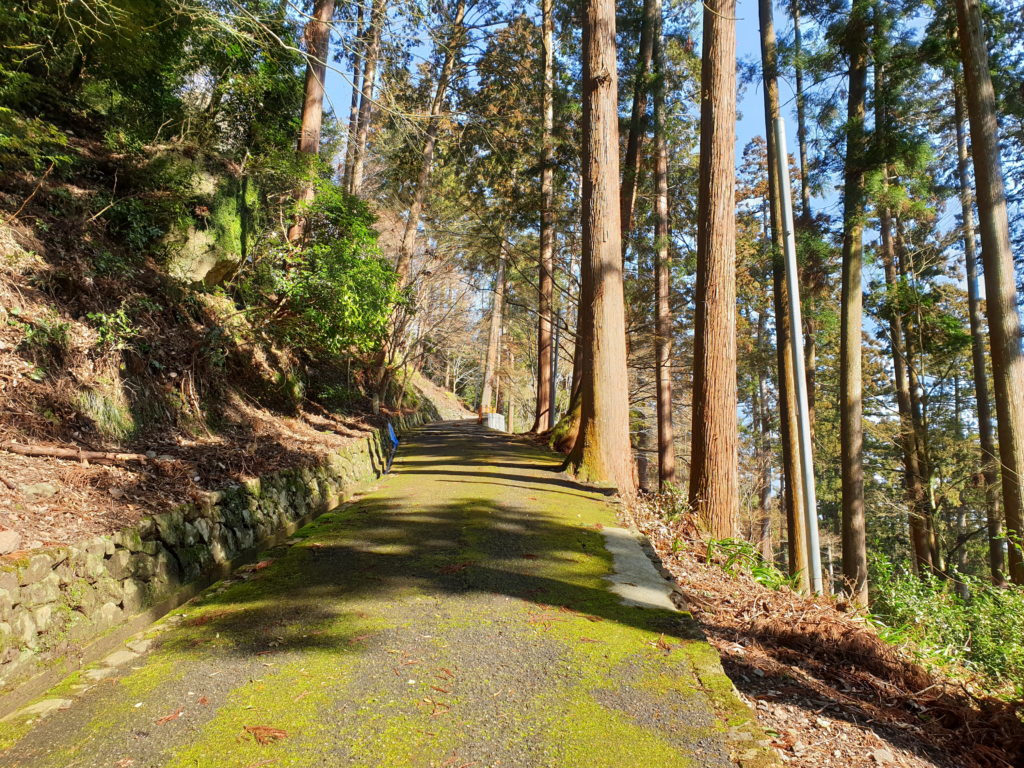
Yoshiminedera’s history stretched back to the early 11th Century. It was founded by the priest Gensan in 1029. He carved an eleven-head Kannon (Goddess of Mercy) which enjoyed pride of place in the temple. Very soon, the temple was favoured by the imperial family and was gifted with a thousand-armed Kannon, somehow eclipsing the earlier carving. The temple also expanded considerably under imperial patronage but was destroyed in a civil war in 1467. Later, it was rebuilt by the mother of the fifth Tokugawa Shogun at the end of the 17th Century. Most of the buildings now date to that period.
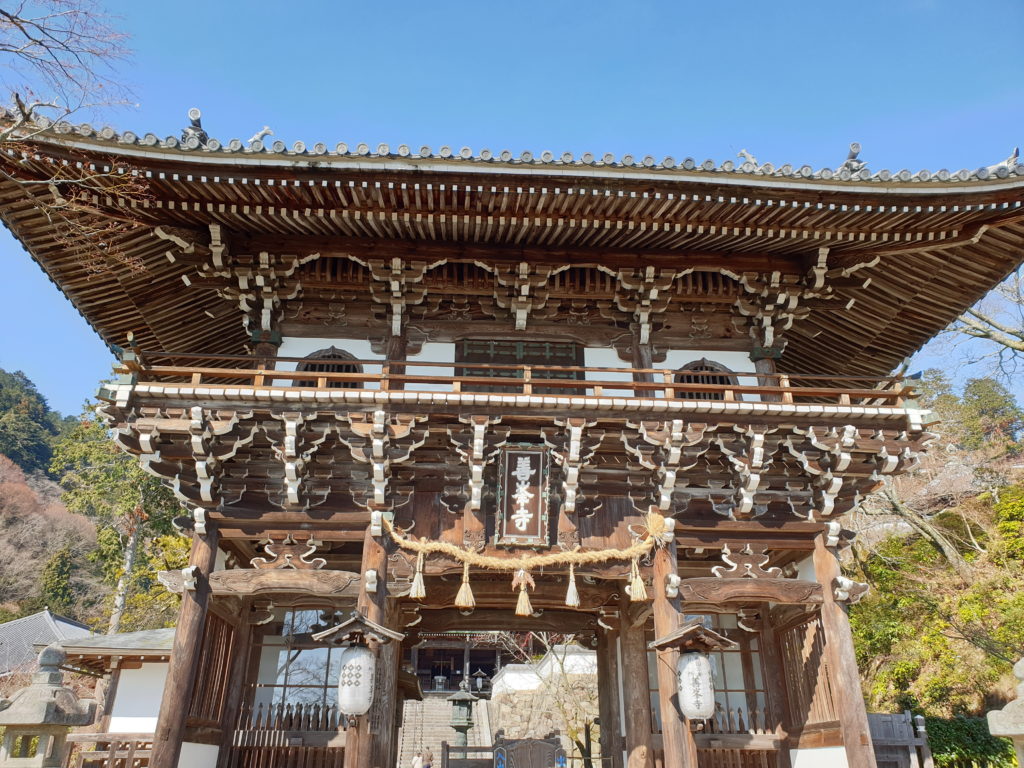
Travelling always heighten our curiosity about things and events encountered. It is not enough just to take pictures, follow the tour guide and sample delicacies on offer without immersing into the history and meaning of what we experienced. Every trip outside of home is a learning journey.
I did not know much about Yoshiminedera and its history when I visited. We came here because of its relative remoteness and the promise of a beautiful serene ground to explore. I left with a mostly pleasant sensory experience of the place but also with an appetite to find out more about the belief (i.e. Japanese Buddhism) and spirit that inspired and sustained these ground and other similar temples for hundreds of years.
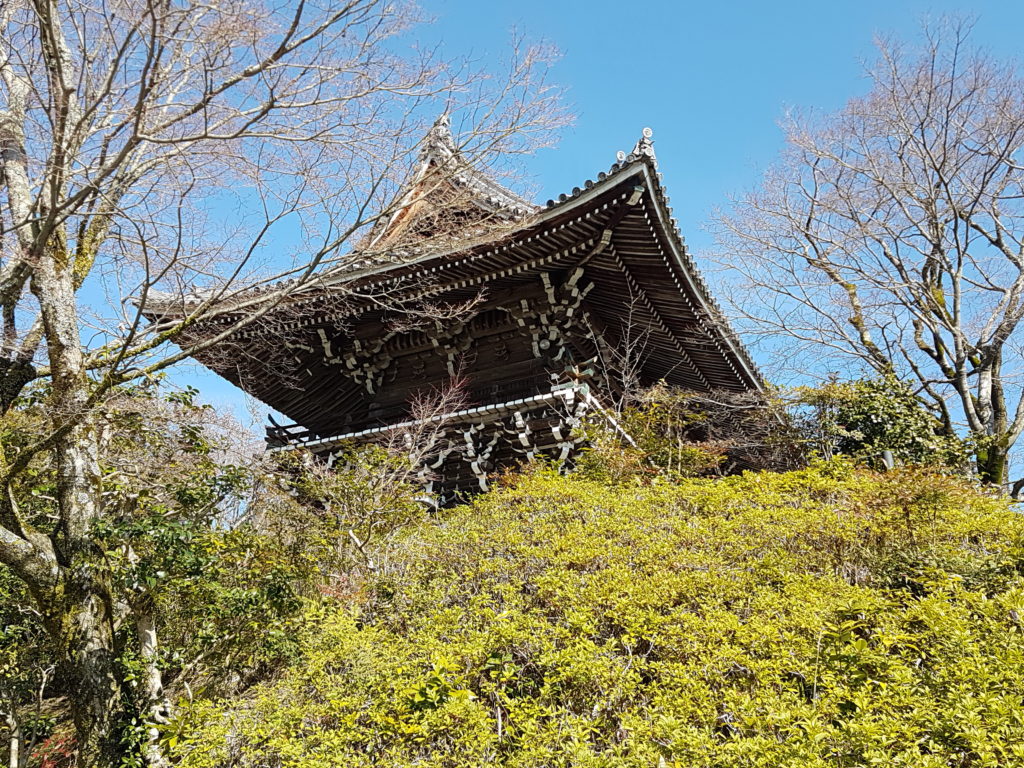
There are many schools of thought (or sects) in Buddhism. Man has a fertile mind. Give him one idea and he will come up with one hundred interpretations. The Yoshiminedera is associated with the Tendai sect, an important school in the history of Japanese Buddhism. Tendai was founded during the Heian period (794-1185) by the monk Saicho who went to China to learn the latest development in Buddhist philosophy and practice.
He studied at Mount Tiantai, the headquarter of the eponymous native Chinese Buddhist sect in Zhejiang province. The Tiantai sect was influential in Tang China and its comprehensive approach and amiable regard for other Buddhist schools attracted Saicho. After his studies at Tiantai, he also got himself initiated into Chan meditation (or Zen, as it developed later in Japan) and esoteric Buddhism. Throughout his trip, he collected and copied various Buddhist texts, believing that those available in Japan might be adulterated, a common problem in the pre-Gutenburg world where books are hand copied.
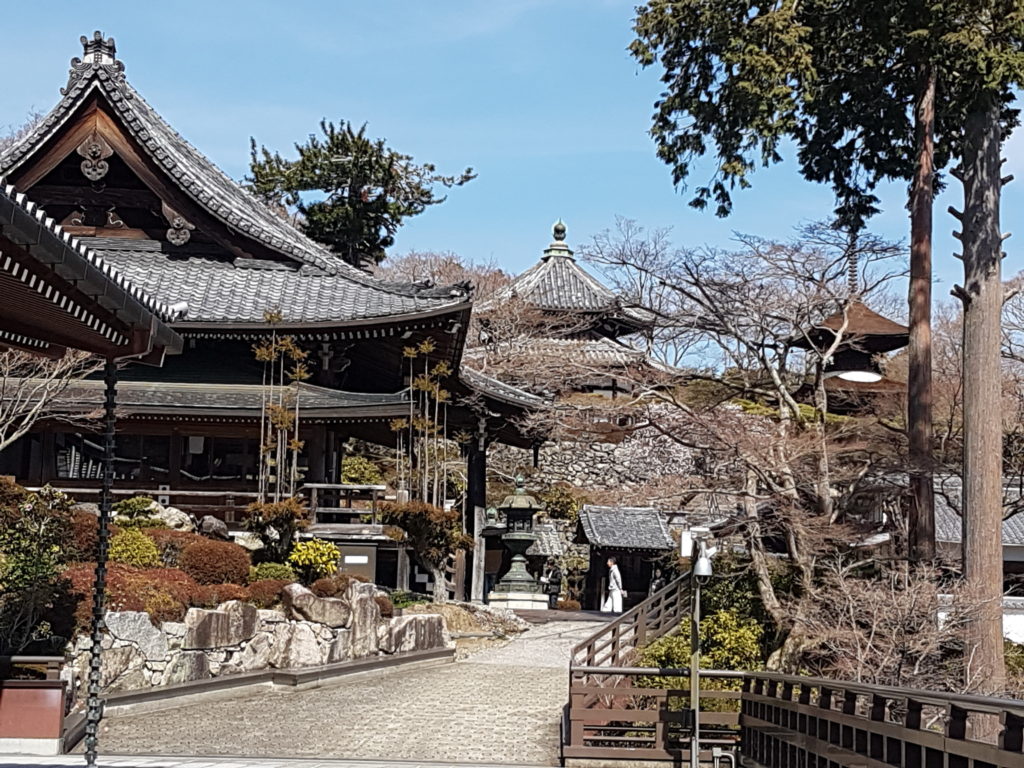
On his return, Saicho established the Tendai school in Mt Hiei, which was about 46 km northeast of Yoshiminedera. Emperor Kanmu was favourably disposed to Saicho as he hoped the new teaching would reconcile the rivalry among the existing Buddhist sects. For this, the Tendai school was well placed, being much more inclusive than other practices.
Tendai preaches that all forms of Buddhist practice lead to the same path towards Buddhahood or enlightenment. The Lotus Sutra, of which Tiantai adhered to, tells the parable of a father trying to get his children out from his burning mansion. But all his children were absorbed in their toys until the father told them of three carts pulled by a goat, deer and ox waiting outside. Piqued by curiosity, the children came out of the burning mansion with the three carts, whereupon the father took all of them in one cart to escape.
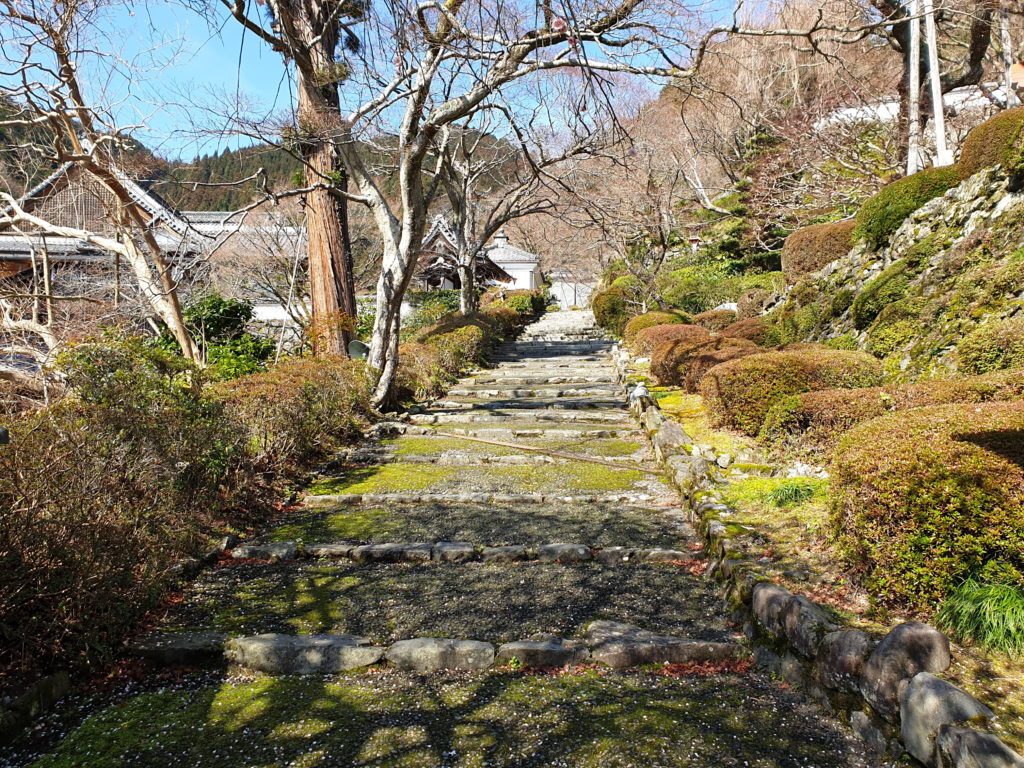
A central belief of Tendai is that every being has the potential to attain enlightenment. To transform from an unenlightened state, one needs to completely rid oneself of delusions! Looking around the world and at our lives, it is not difficult to agree that most of us unenlightened folks are deluded beings. Seeking power, chasing wealth, basking in hubris, believing in our superiority over others, etc., are the stuff of stories, both in real lives and in fiction. Usually the delusion is only realised at the end of a story or when one is near expiry date on earth, often in tragic circumstances.
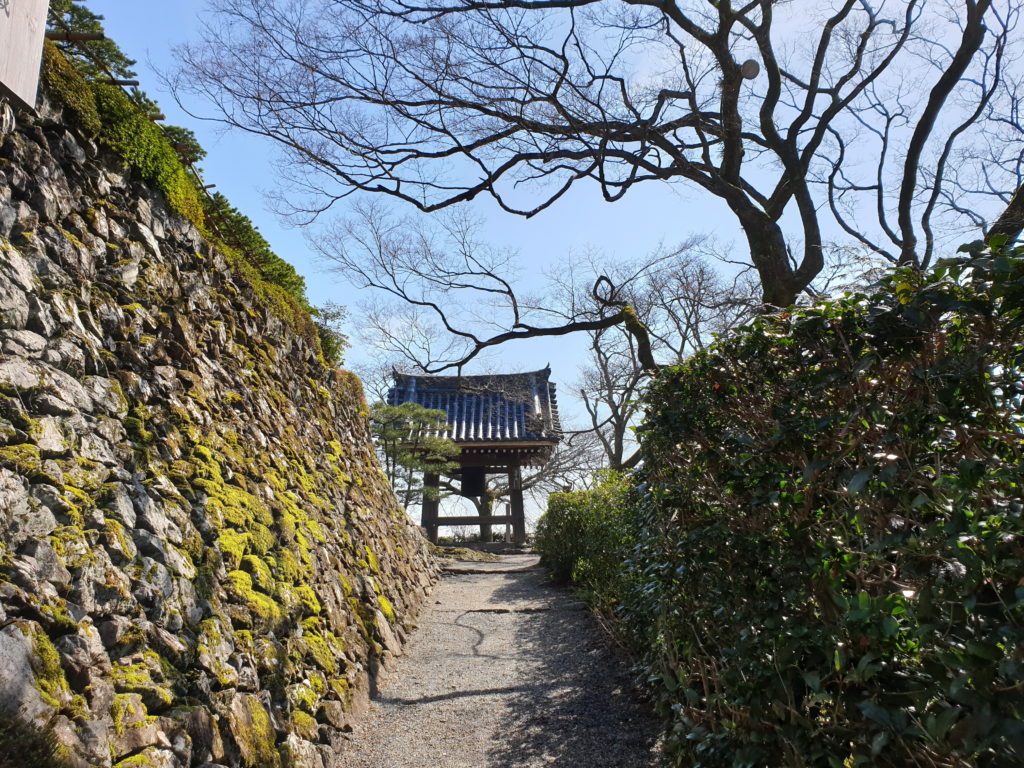
The sprawling grounds of Yoshiminedera is a delight to explore. There are several routes to walk and all are well signposted. The terrain of striking slopes and gentle winding paths dotted by pavilions, shrines, temples, cherry blossoms and trees at springtime wrap around you, giving a sense of peace and serenity. It is a stroll you do not want to hurry, but to savour every step, perhaps stopping now and then to soak in the mountain air and take mental pictures to store and recall in the future when stressful times fall upon us.
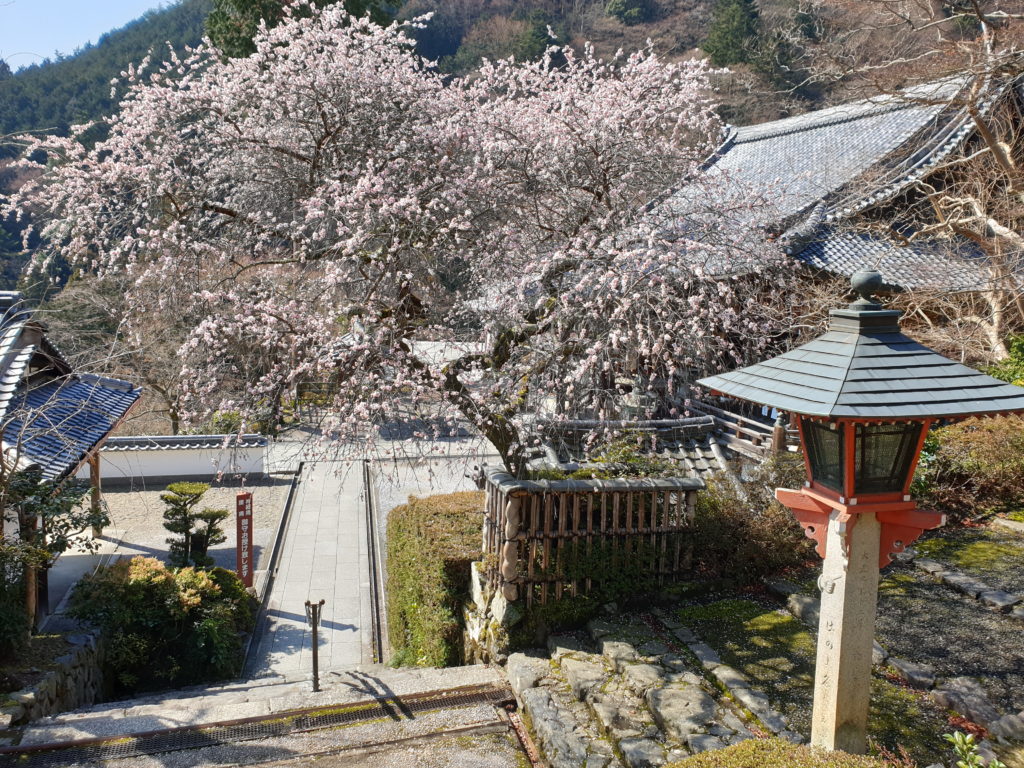
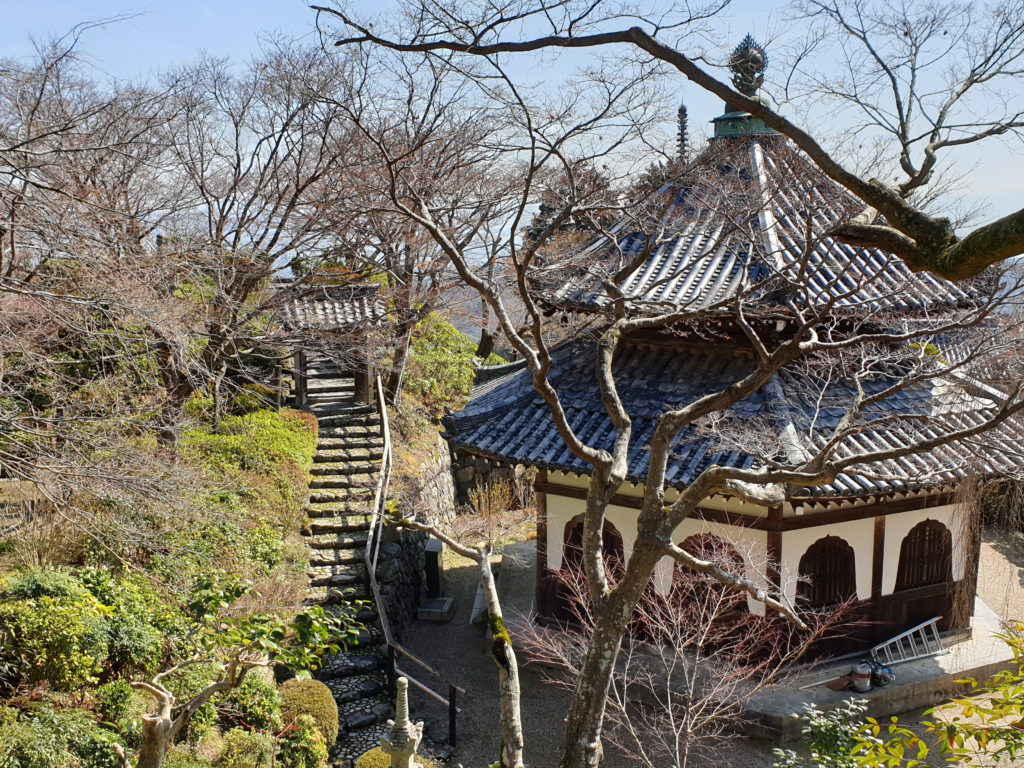
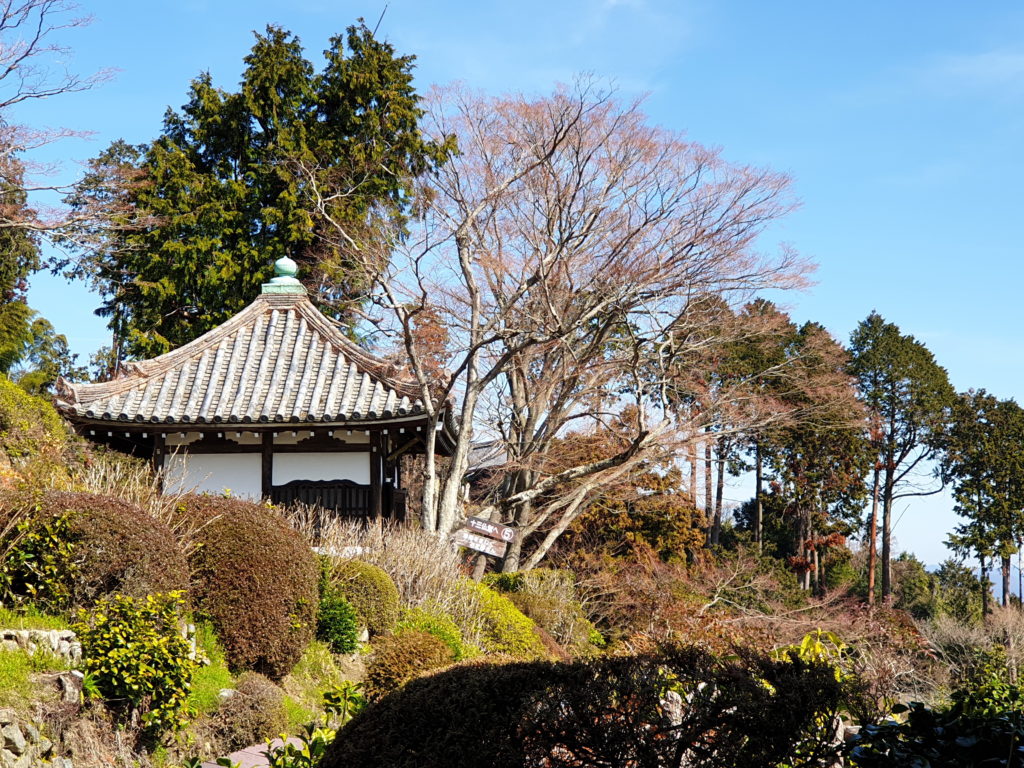
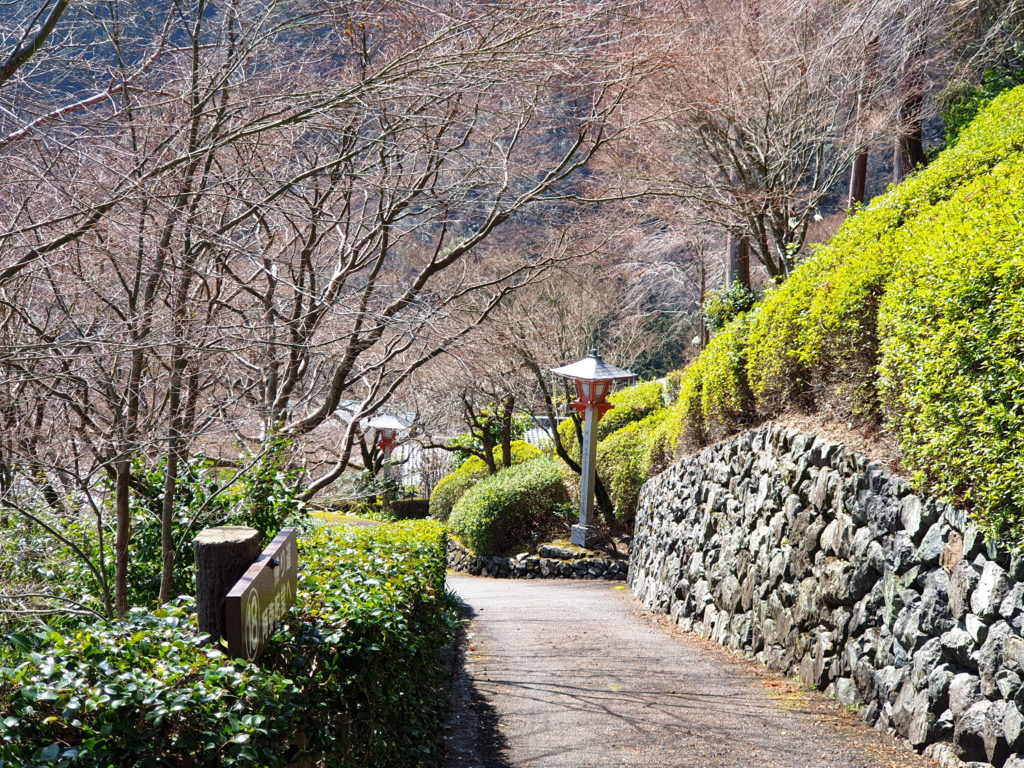
Yoshiminedera has a national treasure, the 600-year old Yoryu no Matsu or “Gliding Dragon” pine tree. It is 2 metres tall but extends 40 metres wide on account of two branches guided to grow horizontally. It is difficult to get a full picture of the entire tree on my camera! I could only figure out a thick branch supported by wooden trusses. Even if the whole tree can be seen, it must look quite grotesque, not the essence of what a tree is. For the Japanese, and perhaps other cultures too, the evergreen pine tree is a symbol of longevity, fortitude and good fortune. In the case of the “Gliding Dragon”, the reverence for its symbolic significance seemed to override the natural growth trajectory of the tree, which is to succumb to the force of gravity.
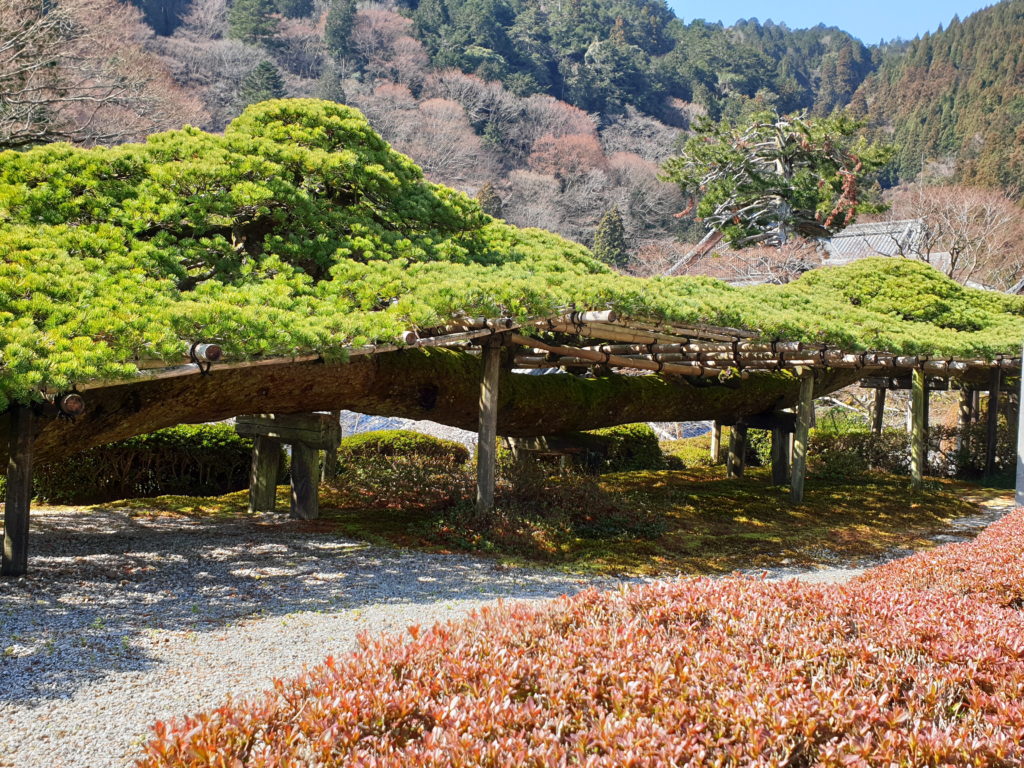
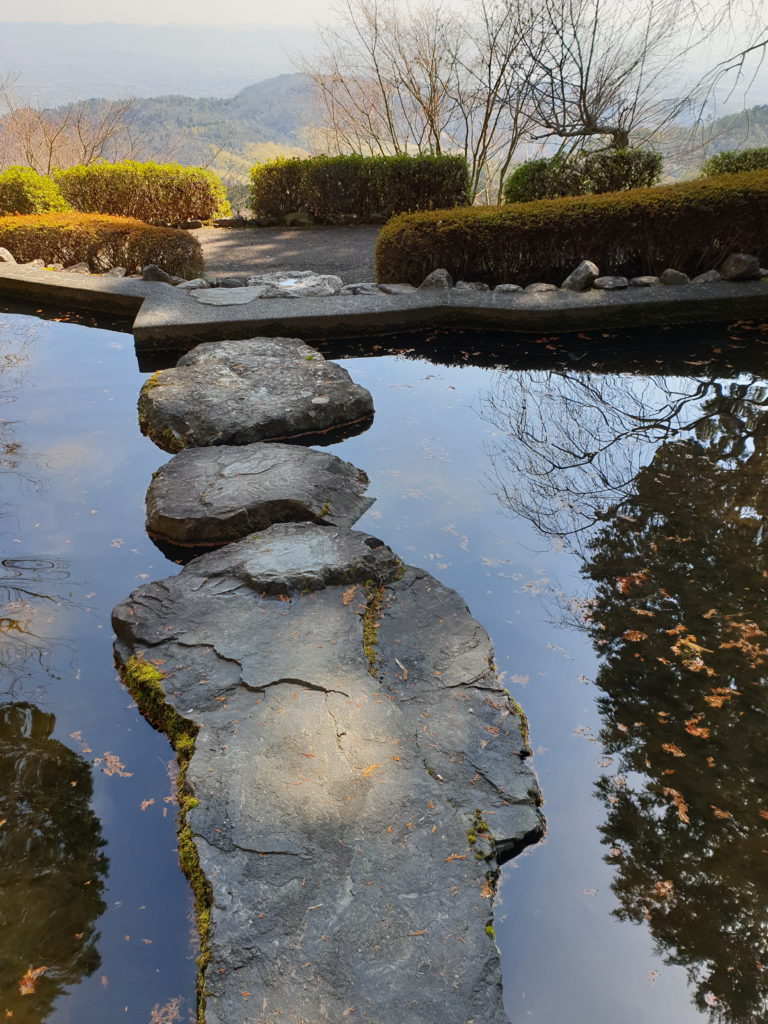
Most of us climb mountains to savour the view faraway at the top. You will not be disappointed in Yoshiminedera (though it is hardly a mountainous climb). The little effort you make in overcoming the gentle climb yields disproportional payback in picture-postcard scenery near and far. Though it was neither prime season for cherry blossom nor the height of autumn when we were there, the views were still enticing and alluring, perfect for contemplation or picnic lunch. The latter option was more appealing as it was near to mealtime. We stopped at a grass patch near a path overlooking the edge and had a simple lunch of origiri and fruits. I did feel a bit guilty for consuming food in a place obviously built with ascetism in mind, the last leg to Buddhahood.
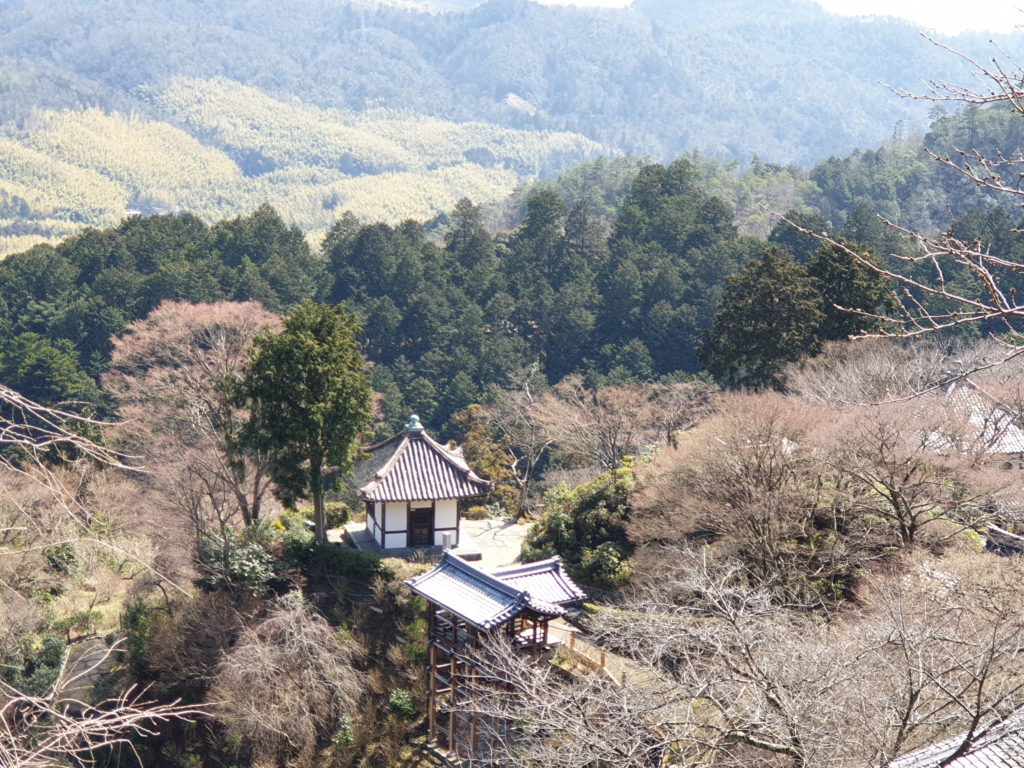
There are several lookout points where you can survey a large chunk of Kyoto in an eyeful. One imagines the Yoshiminedera monks here, few hundred years ago, watching the dimly lit houses far away in the dark night and contemplating the struggles of ordinary people and nobles alike; the scheming and conniving of the ambitious; the aspiration and yearnings of righteous people not realised, and sigh at the futility of it all.
Not much has changed today. Perhaps, an insight of Tendai Buddhists is relevant here, that all things are not real. A thing or phenomenon is made up of other things or phenomena and therefore has no real core itself. Therefore, a thing does not really exist permanently. It exists only temporarily, as a composite of other things that are fluid and ever-changing. It will take me some time to ponder over this and its consequences.
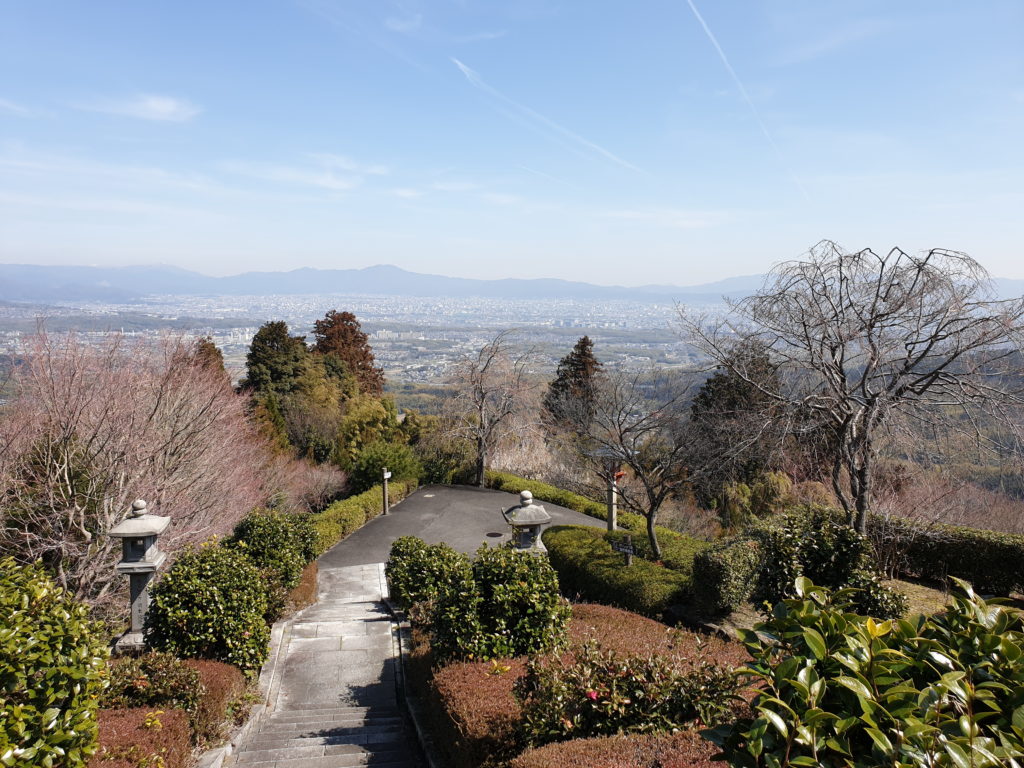
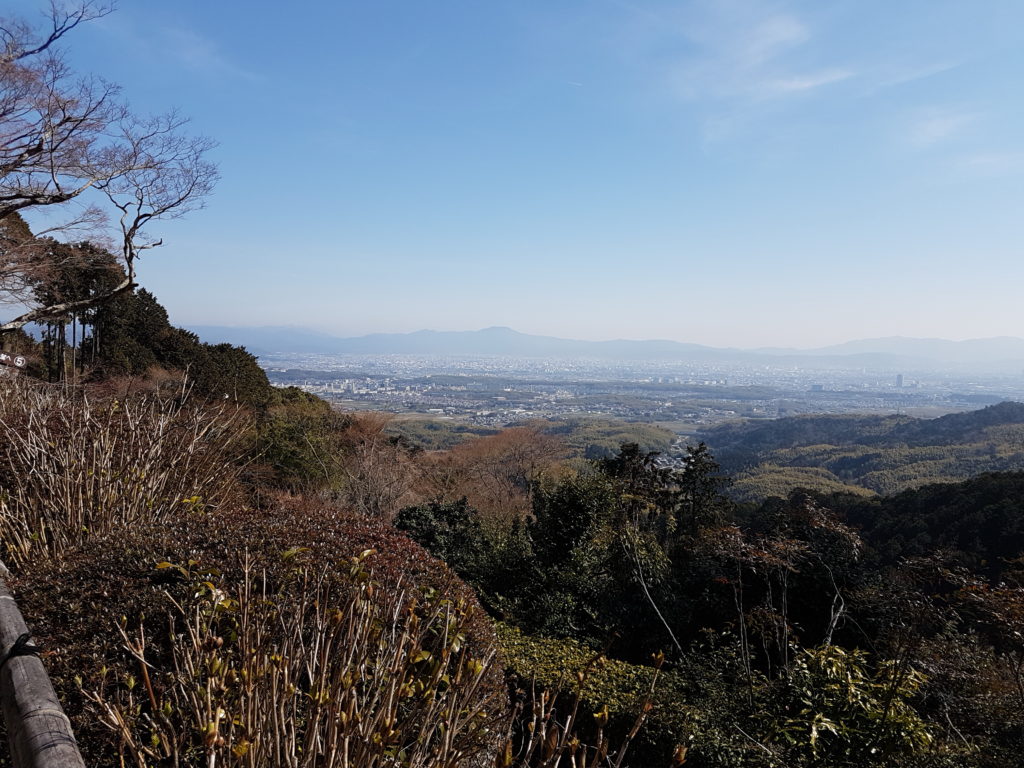
Worried that we might miss the bus back to town, we left reluctantly after mid afternoon. Yosheminedera is a gem. One 30-minute bus journey from Kyoto and you find yourself in meditative calm, where you can disengage from worldly concerns for the moment and have your spirit rejuvenated.
